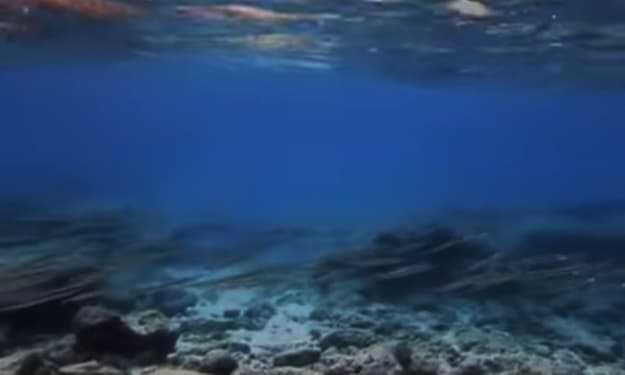
Baby of bengal
The bay of bengal is an immense breadth of water situated in the northeastern piece of the Indian Sea. It is encircled by a few nations like India, Bangladesh, Myanmar, Sri Lanka, and Thailand. With an area of roughly 2.17 million square kilometers, it is perhaps of the biggest cove on the planet. The Cove of Bengal is a critical waterway for some reasons. It is home to different marine life, gives important assets, and is a pivotal transportation course for worldwide exchange. In this blog, we will investigate the Cove of Bengal in more detail.
Geology:
The Cove of Bengal is lined by India toward the west, Bangladesh toward the north, Myanmar toward the east, and Sri Lanka and the Andaman and Nicobar Islands toward the south. The cove is roughly 2,000 km long and 1,000 km wide, with a typical profundity of 2,600 meters. It is taken care of by a few huge waterways like the Ganges, Brahmaputra, and Irrawaddy, which carry critical measures of silt into the narrows, making it a profoundly useful locale for fishing.
Environment
The environment of the Cove of Bengal is affected by the storm winds, which carry weighty precipitation to the locale. The southwest rainstorm, which happens among June and September, brings the majority of the precipitation to India, Bangladesh, and Myanmar. The upper east rainstorm, which happens among November and February, carries precipitation toward the eastern bank of India and Sri Lanka. Typhoons are likewise a typical event in the Sound of Bengal, especially among May and November. These twisters can make critical harm beach front networks and foundation.
Marine Life:
The Cove of Bengal is home to a different scope of marine life, including in excess of 120 types of sharks and beams, 25 types of dolphins and whales, and more than 4,000 types of fish. The absolute most huge fish stocks in the straight incorporate hilsa, pomfret, sardine, and fish. The sound is additionally home to a few types of ocean turtles, including the Olive Ridley, Leatherback, and Green turtles. The Sundarbans delta, which is situated in the Cove of Bengal, is the biggest mangrove woodland on the planet and is home to the Bengal tiger, saltwater crocodile, and a few types of birds.
Economy:
The Cove of Bengal is a significant monetary district, giving critical assets and filling in as an essential transportation course for worldwide exchange. The cove is home to a few oil and gas holds, especially in the seaward districts of Bangladesh and Myanmar. The cove is likewise a significant fishing ground, giving jobs to a great many individuals in the district. The ports of Chennai, Visakhapatnam, Kolkata, and Chittagong are significant delivery centers in the locale, dealing with huge measures of freight every year.
Challenges:
Regardless of its critical monetary and natural worth, the Inlet of Bengal faces a few difficulties. Overfishing is a critical issue in the district, with many fish stocks being drained because of impractical fishing rehearses. Contamination is likewise a significant issue, especially in seaside regions, where untreated sewage and modern waste are frequently unloaded into the cove. Environmental change is one more huge test, with rising ocean levels and more successive and extreme twisters compromising seaside networks.
End
The Inlet of Bengal is an immense and critical waterway, home to different marine life, important assets, and significant delivery courses. While the inlet faces a few difficulties, including overfishing, contamination, and environmental change, it stays a fundamental monetary and natural locale. The sound is a sign of the interconnectedness of our reality's seas and the requirement for economical practices to safeguard these essential biological systems.
than simply being a characteristic miracle, the Narrows of Bengal holds a huge spot ever, culture, and society. The narrows has been a site vital since the beginning of time, with old shipping lanes interfacing the locale to the Center East, China, and Europe. The Narrows of Bengal has been a crucial piece of South Asian societies, with fantasies, legends, and ceremonies spinning around the straight and its marine life. The district is likewise home to a few native networks, whose lives and vocations are profoundly associated with the straight's assets.
Quite possibly of the main social and strict celebration in the area is the yearly Ganga Sagar Mela, which happens on the Sagar Island, situated at the mouth of the Ganges Stream in the Sound of Bengal. The celebration is a festival of the heavenly waterway Ganges and is gone to by a great many fans from everywhere India and then some. The island is likewise home to a few jeopardized animal categories, including the Olive Ridley turtle, and is a safeguarded region.
The Sound of Bengal plays had a vital impact in forming the locale's cutting edge history, especially with regards to expansionism and dominion. The straight was a site of contention and double-dealing during the frontier time frame, with the English and other European powers laying out ports and general stores in the district. The cove's assets were taken advantage of to serve pilgrim powers, with neighborhood networks frequently enduring the worst part of the financial and natural harm.
Lately, the Straight of Bengal has turned into a site of international importance, with nations like China, India, and the US competing for impact in the district. The cove is likewise a wellspring of strain between adjoining nations, especially comparable to regional questions and fishing freedoms. The requirement for feasible administration of the straight's assets and the security of its biological and social legacy is turning out to be progressively pressing.
All in all, the Cove of Bengal is a huge and different district that holds gigantic worth and importance for individuals and networks that call it home. From its environmental and monetary significance to its social and authentic importance, the narrows is a fundamental piece of the texture of South Asia. As the locale faces huge difficulties, it is crucial to guarantee that the straight's assets are overseen economically, and its social and environmental legacy is safeguarded for people in the future.
About the Creator
Enjoyed the story? Support the Creator.
Subscribe for free to receive all their stories in your feed. You could also pledge your support or give them a one-off tip, letting them know you appreciate their work.





Comments
There are no comments for this story
Be the first to respond and start the conversation.